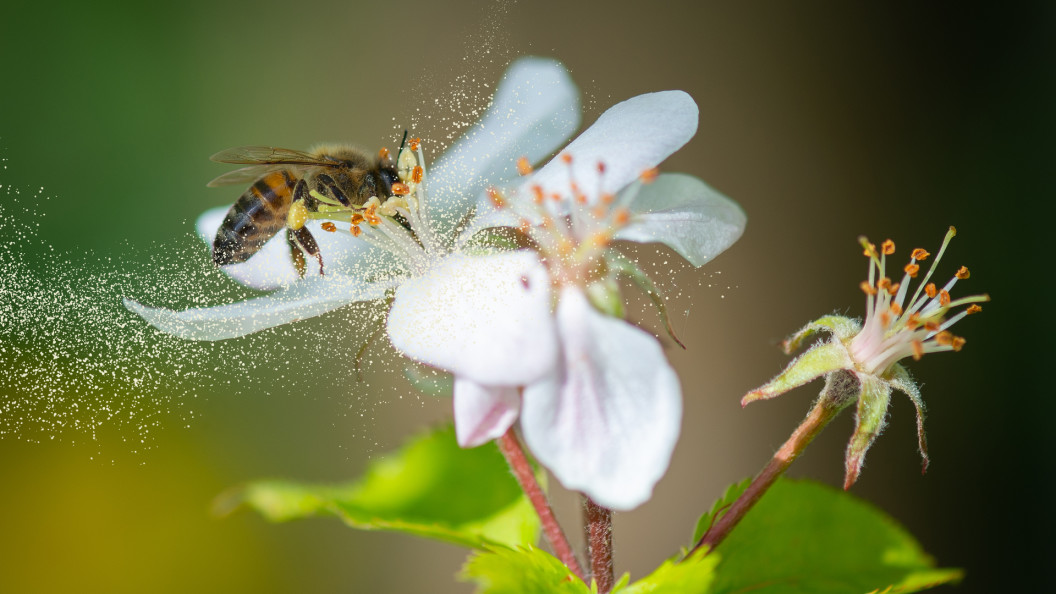- Science News
- Environment
- Bees, blue light, and bacteria in beetles’ ‘back pockets’: Most viewed articles of August 2022
Bees, blue light, and bacteria in beetles’ ‘back pockets’: Most viewed articles of August 2022

Image: Shutterstock.com
by Angharad Brewer Gillham, Frontiers science writer
Each month, Frontiers shines a spotlight on some of the leading research across a wide range of topics. Here are just some of the highlights that resonated strongly with readers on our news site in the month of August.
1. Modern pesticides make it hard for bees to keep on the straight and narrow
Research published in Frontiers in Insect Science showed that common pesticides affected bees’ brains so that they couldn’t orient themselves properly. Bees exposed to sulfoxaflor and imidacloprid were tested on their ability to respond to stimuli that tricked them into thinking they’d been blown off course, a situation which required them to use their optomotor response to reorient themselves. Compared to control bees, they performed very poorly, reacting inappropriately or not at all to the stimuli. The problem seems to be caused by damage to the nervous system, but the exact mechanism is unclear.
Since bees need this optomotor response to travel between different sources of pollen, and since these insecticides are widely used, this is a source of significant concern. The authors tested the optomotor response in walking bees rather than flying bees, so further research is called for, but if flying bees can’t overcome their impairments they may not be able to pollinate crops and wildflowers.
Article link: https://www.frontiersin.org/articles/10.3389/finsc.2022.936826/full
2. Beetles that keep bacteria in their ‘back pockets’Beetles from the genus Lagria take advantage of their symbiotic relationship with bacteria to protect their offspring from fungi in the earliest stages of development. But maintaining this relationship is difficult, because these beetles undergo a total body plan change as they mature. To take the beneficial bacteria with them, young beetles have special ‘back pockets’ which allow them to keep the bacteria in reserve until they have reached adulthood and need the bacteria to protect their own eggs.
Writing in Frontiers in Physiology, the researchers showed how these unique structures - only fully developed in females – work to maintain the link with a microbial culture that promotes their offspring’s survival.
Article link: https://www.frontiersin.org/articles/10.3389/fphys.2022.979200/full
3. Too much blue light from electronic devices may age us fasterExperiments in fruit flies, reported in Frontiers in Aging, suggest that the blue light given off by many LED devices may have negative repercussions for our cellular processes. A team of scientists from Oregon State University followed up previous research showing that blue light exposure affected lifespan and brain aging in fruit flies by investigating the metabolic processes that underpin those changes. They found there were significant differences in the metabolites expressed by flies living under blue light, especially in the levels of succinate and glutamate.
“Succinate is essential for producing the fuel for the function and growth of each cell. High levels of succinate after exposure to blue light can be compared to gas being in the pump but not getting into the car,” said Dr Giebultowicz, senior author of the study. “Another troubling discovery was that molecules responsible for communication between neurons, such as glutamate, are at the lower level after blue light exposure.”
Although the authors caution that they exposed the flies to more intense blue light than humans would usually experience, they warn that since the chemicals for cellular signals are conserved between flies and humans similar effects may still be seen in humans.
Article link: https://www.frontiersin.org/articles/10.3389/fragi.2022.983373/full
4. Complex tarsier duets show off the strongest singersTiny Gursky’s spectral tarsiers sing duets with their mates in order to announce ownership of their territories – between 1.6 and 4.1 hectares shared between a breeding pair and their juvenile offspring, who may also join in with the singing. These songs already help avoid fights by staking the tarsiers’ claim to their territory, but research published in Frontiers Ecology and Evolution suggests that the quality of the singing may also advertise the tarsiers’ strength and health.
While some of the tarsiers can sing notes over a very wide range, and some can sing rapid-fire repeated sequences of notes, very few can do both at once. The research team found that the broader the range of notes, the slower tarsiers typically sang, and that females generally sang a narrower band of notes than males did. The trade-off suggested that physical constraints meant males and females had to sacrifice the speed of their singing to sing a wide range of notes, and vice versa. The ability to sing a wide range of notes quickly could therefore signal especially good physical fitness.
“There is still so much to be learned about the function of tarsier duets: the information they contain about the calling animals, and what information other tarsiers pick up on,” said Dr Clink, senior author. “The possibility that duets contain information about the fitness of a calling individual – the vocal equivalent of a peacock’s tail – is an exciting avenue for future research.”
Article link: https://www.frontiersin.org/articles/10.3389/fevo.2022.910121/full
REPUBLISHING GUIDELINES: Open access and sharing research is part of Frontiers’ mission. Unless otherwise noted, you can republish articles posted in the Frontiers news site — as long as you include a link back to the original research. Selling the articles is not allowed.







